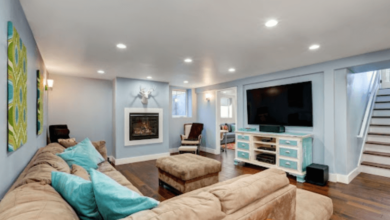Painting Mistakes That Can Ruin the Finish

Painting is one of the most effective ways to transform spaces, objects, or DIY creations, but even small errors can ruin the final result. Whether you’re redecorating a room or working on admired wooden airplane models, knowing what pitfalls to avoid can save time, effort, and frustration. Below, we share several of the most common painting mistakes and how to ensure a smooth, professional-quality finish.
1. Skipping the Prep Work
Preparation is key when it comes to painting anything, yet it’s often overlooked. Skipping proper prep can result in uneven surfaces, missed areas, and poorly adhered paint.
Sanding, cleaning, and priming are essential for both spaces and objects. For example, with wood surfaces like furniture or models, neglecting to sand away imperfections or old coatings can lead to a blotchy or patchy finish that diminishes the piece’s appearance.
Always clean surfaces thoroughly to remove dust, grease, or dirt. Choose an appropriate primer to give your paint a strong base, especially on porous, glossy, or uneven surfaces.
2. Using Low-Quality Paint or Tools
Investing in high-quality paint and brushes may seem like an unnecessary expense at first, but it makes a significant difference. Thin, low-grade paint often requires multiple coats, leading to uneven coverage and wasted time. Similarly, cheap brushes and rollers can leave streaks, uneven textures, or shed bristles on your surface.
Use high-quality brushes that match the type of paint (e.g., synthetic brushes for water-based paints). Rollers with an appropriate nap are also essential for even application.
3. Painting in Poor Conditions
Environmental factors can significantly affect your painting project. For example, high humidity causes paint to dry slowly and unevenly, while very low temperatures can make it too thick to apply smoothly.
For spaces like garages or rooms facing harsh sunlight, not adjusting for excessively warm or dry conditions can result in rapid drying before you even finish spreading the paint. This creates visible lap marks or cracking.
Always aim to paint in temperatures between 50°F and 85°F (10°C and 30°C). Avoid overly humid or extremely dry conditions for the best results.
4. Overloading Brushes or Rollers
Applying too much paint in one stroke is a common error for beginners. It might seem like a faster way to get coverage, but paint drips and heavy streaks can ruin the finish. Overloading tools not only wastes paint but often leads to visible runs or an uneven texture when dried.
Dip your brush about one-third of the way into the paint and wipe off excess on the edge of the can. Roll rollers in paint trays until fully coated but without drips before applying an even layer.
See also: How to Pick the Right Garage Door for Your Home
5. Not Allowing Proper Drying Time Between Coats
Patience is crucial when layering paint. Applying additional coats before the first one is fully dry can cause peeling, uneven textures, or bubbling. This results in more corrective work later, or even the need to start over entirely.
Follow the manufacturer’s recommendations for drying times, which typically vary depending on the type of paint. For instance, water-based paints often dry within hours, but proper curing may take several days.
6. Failing to Seal or Protect the Paint Job
Once the painting job is done, many people skip the final step of sealing the finished work. Without this step, objects like wooden airplane models or painted furniture might face wear and tear much faster. Protective finishes like varnish or polyurethane not only enhance durability but also elevate the overall appearance of colored or natural wooden textures.
Use a clear sealer that complements the type of paint and intended use of the painted object. Always allow adequate drying before sealing for the best durability.
Avoiding these six common painting mistakes ensures both a polished result and long-lasting durability. Prioritize prep work, make quality choices, and remain patient throughout your project. The effort spent on proper technique pays off not only in aesthetics but also in saving time and costs on corrections later.





